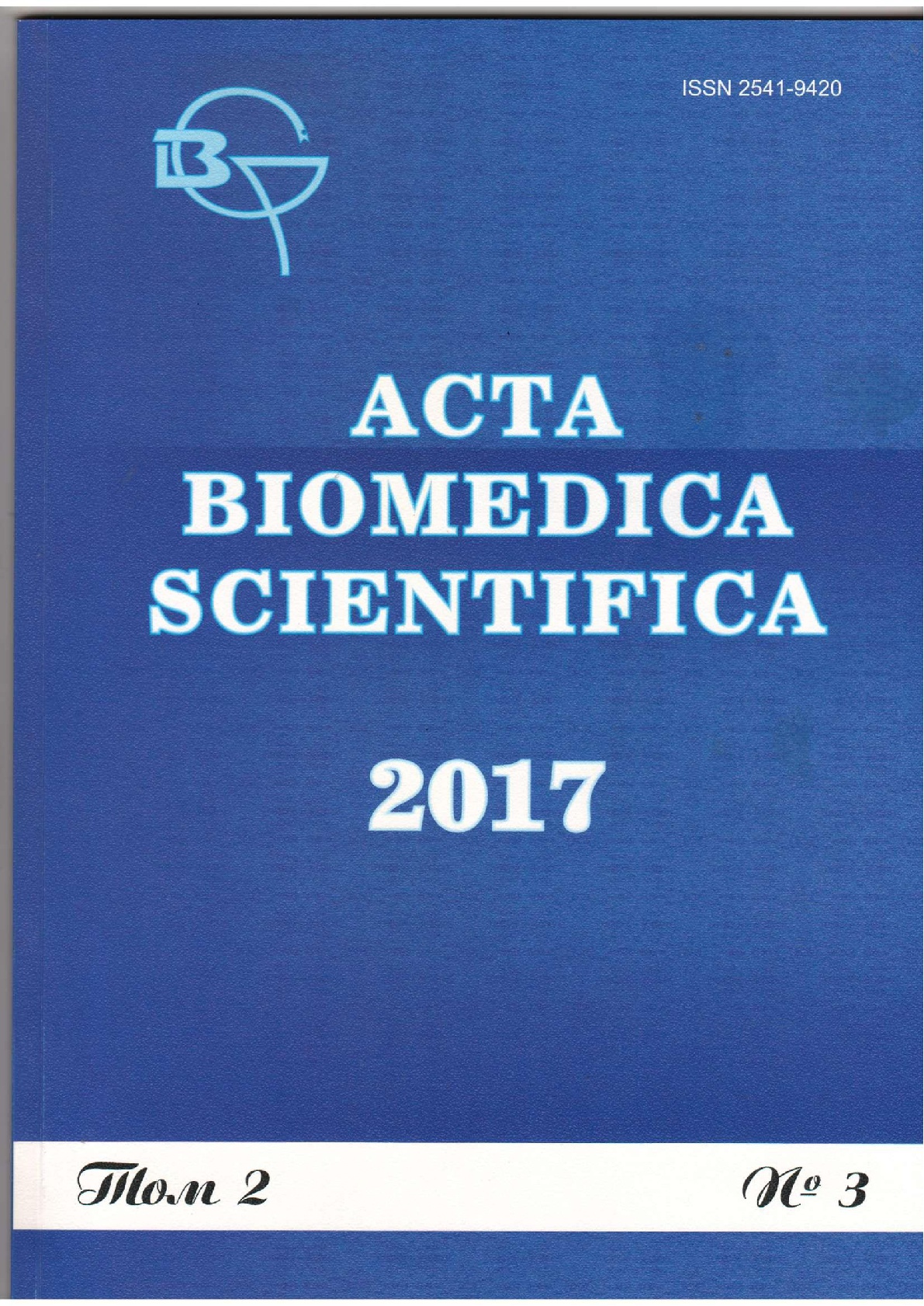Ulan-Ude, Ulan-Ude, Russian Federation
Ulan-Ude, Ulan-Ude, Russian Federation
Ulan-Ude, Ulan-Ude, Russian Federation
Ulan-Ude, Ulan-Ude, Russian Federation
Ulan-Ude, Ulan-Ude, Russian Federation
Pokazan uspeshnyy opyt primeneniya vakuumno-aspiracionnoy terapii pri lechenii spontannogo razryva pischevoda (sindrom Burhave). Slozhnost' diagnostiki obuslovlena nedostatochnoy informaciey sredi vrachey ob etom sindrome. V moment obrascheniya pacientam s klinicheskoy kartinoy razryva pischevoda v pervuyu ochered' isklyuchayut ostryy koronarnyy sindrom (OKS), i pri otsutstvii dannyh, svidetel'stvuyuschih ob OKS, dal'neyshuyu diagnostiku ne provodyat, chto i nablyudalos' v dannom sluchae. Hirurgicheskaya i endoskopicheskaya taktika, primenennaya u dannogo pacienta, byla pravil'noy i svoevremennoy.
sindrom Burhave, endoskopicheskaya vakuumnaya terapiya, spontannyy razryv pischevoda, mediastinit
1. Zavgorodnev SV. (2007). spontaneous rupture of the thoracic esophagus complicated with purulent mediastinitis, bilateral pneumohydrothorax, pleural empyema and bronchial fistula [Spontannyy razryv grudnogo otdela pishchevoda, oslozhnennyy gnoynym mediastinitom, dvustoronnim gidropnevmotoraksom, empiemoy plevry i bronkhial’nym svishchom]. Khirurgiya. Zhurnal im. N.I. Pirogova, (4), 54-56.
2. Korymasov EA, Benyan AS. (2011). Spontaneous rupture of the esophagus complicated with purulent mediastinitis and sepsis [Spontannyy razryv pishchevoda, oslozhnennyy gnoynym mediastinitom i sepsisom]. Khirurgiya. Zhurnal im. N.I. Pirogova, (1), 70-71.
3. Kochukov VP. (2012). Spontaneous rupture of the esophagus (Boerhaave syndrome) [Spontannyy razryv pishchevoda (sindrom Burkhave)]. Khirurgiya. Zhurnal im. N.I. Pirogova, (7), 83-84.
4. Timerbulatov VM, Timerbulatov SV. (2009). Spontaneous rupture of the esophagus [Spontannyy razryv pishchevoda]. Grudnaya i serdechno-sosudistaya khirurgiya, (2), 34-37.
5. Chernousov AF, Bogopolskii PM, Kurbanov FS. (2000). Surgery of esophagus [Khirurgiya pishchevoda]. Moskva, 352 p.
6. Shestyuk AM. (2010). Penetrating traumas of thoracic esophagus: current state of the problem [Pronikayushchie povrezhdeniya grudnogo otdela pishchevoda: sovremennoe sostoyanie problemy]. Novosti khirurgii, 18 (3), 129-137.
7. Ben-David K. (2011). Minimally invasive treatment of esophageal perforation using a multidisciplinary treatment algorithm: a case series. Endoscopy, 43 (2), 160-162.
8. Chen YH. (2012). Comparative study of esophageal stent and feeding gastrostomy jejunostomy for tracheoesophageal fistula caused by esophageal squamous cell carcinoma. PLoS One, 7 (8), 47-76.
9. Ivatury RR. (2014) .Oesophageal injuries: position paper. World J. Emerg. Surg., 9 (1), 9-10.
10. Kelechi E, Emeka B. (2012). Is oesophagectomy or conservative treatment for delayed benign oesophageal perforation the better option? Interact. Cardiovasc. Thorac. Surg., 10, 509-511.
11. Mennigen R. (2014). Novel treatment options for perforations of the upper gastrointestinal tract: Endoscopic vacuum therapy and over-the-scope clips. World J. Gastroenterol., 20 (24), 7767-7776.
12. Soreide JA, Viste A. (2011). Esophageal perforation: diagnostic workup and clinical decisionmaking in the first 24 hours. Scand. J. Trauma Resusc. Emerg. Med., 19 (1), 66-89.
13. Wahed S. (2014). Spectrum of esophageal perforations and their influence on management. Br. J. Surg., 101 (1), 156-162.





